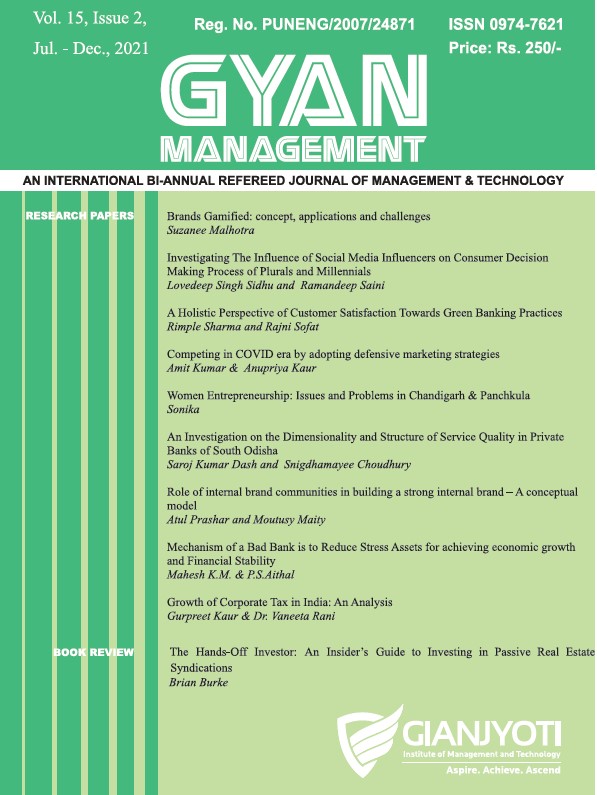Modelling and Prediction of Financial Stock Investment in India
DOI:
https://doi.org/10.48165/gyanjyoti.2021.2105Keywords:
Arima, Stock Market Index, Adf, Volatility, InvestmentAbstract
The paper focuses on predicting investments in stock markets in India. Stock market investment continues to be popular because it is liquid, and has the potential for high returns when the stock market is not overly volatile. In order to provide a realistic and safe advice for investors, this study forecasts what the India stock market index will look like over the next month. Stock market performance is easily measured with the help of stock market indices. First, the data on the stock market index has non-stationary properties and was differenced using the ADF (Augmented Dickey fuller) approach to regularize it. ARIMA model is fitted to the series and there are five tentative ARIMAmodels which include ARIMA (1,2,1), ARIMA (2,2,1), ARIMA (3,2,5), ARIMA(4,2,4) and ARIMA (5,2,1) where ARIMA (1,2,1) is the best selected model because it has the least AIC and SBIC, the highestadjusted R-square and the least volatility. The best fitted ARIMA (1,2,1) was then used to forecast, and the forecast was good as it is constant over the predicted period, and there is no evidence of high volatility cluster, which suggest to investors to go ahead with investment as there is possibility of making huge profit and having good returns.
Downloads
References
Swain, S; et al. (2018). "Development of an ARIMA Model for Monthly Rainfall Forecasting over Khordha District, Odisha, India.RecentFindingsinIntelligent Computing Techniques. Recent Findings in Intelligent Computing Techniques (Advances in Intelligent Systems and Computing. Advances in Intelligent Systems and Computing. 708. pp. 325–33
Box, George E. P. (2015). Time Series Analysis: Forecasting and Control. WILEY. ISBN 978-1-118-67502-1.
Asteriou, Dimitros; Hall, Stephen G.(2011)."ARIMA Models and the Box–Jenkins Methodology".Applied Econometrics (Seconded.).Palgrave MacMillan. pp. 265–286.
Thakral, Arun (2018). "For those who do not make much money in stocks, here's thecatch".The Economic Times. Retrieved 24 April 2018.
Jalan, Bimal( 2010).Jalan Committee report 2010 - Review of Ownership and Governance of Market Infrastructure Institutions . Mumbai: SEBI. Retrieved 24 April 2018.
Chandrasekhar, C.P.; Mallick, Sarat; A, Akriti. (2018). The elusive retail investor: How deep can (and should) India's stock marketsbe?SEBI.Retrieved24April2018.
CORRESPONDENT,SPECIAL."NationalStock Exchange to file IPO document by 2017". The Hindu. Retrieved 26 February 2017.
Laskar, Anirudh.(2019). "NSE gets 200th company listed on its SME platform". Mint. Retrieved 7 October 2019.
Banz, R. W., (1981). The Relationship between Return and Market Value of Common Stocks. Journal of Financial Economics 9, 3-18.
Basu, S., (1977). Investment Performance of Common Stocks in Relation to Their Price-Earnings Ratios: A Test of the Efficient Market Hypothesis. The Journal of Finance 32, 663-682.
Downloads
Published
Issue
Section
License
Copyright (c) 2021 Bharat Bhushan

This work is licensed under a Creative Commons Attribution-NonCommercial-NoDerivatives 4.0 International License.



